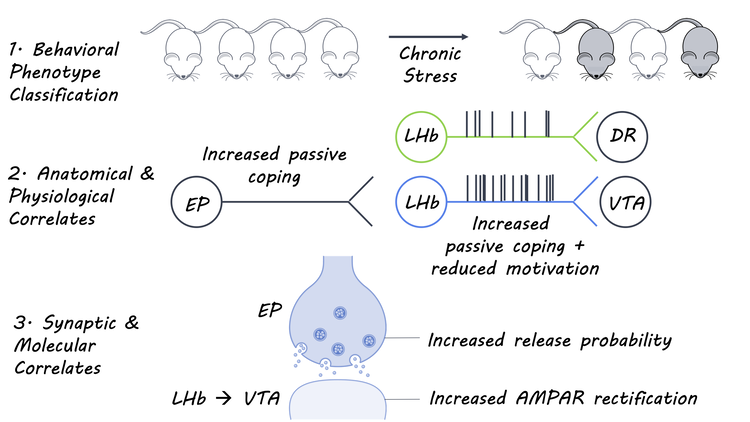Chronic stress has been identified as a prominent risk factor for the development of depression in humans. Several animal models of depression exist that involve exposing the animals to chronic stressors, leading to behavioral changes that mimic a subset of core depression symptoms in humans. The problem with this approach is that while depression often presents in different ways in different people, patients are often grouped into one category. Recent studies have identified that the lateral habenula—a small section of the brain near the pineal gland—is hyperactive in depression. This week in Neuron, Cerniauskas and colleagues developed a novel approach to examine the molecular, synaptic, and circuit basis of unique chronic stress-induced behavioral characteristics in mice.
Published by BrainPost.

DR = dorsal raphe, EP = entopeduncular nucleus, LHb = lateral habenula, VTA = ventral tegmental area
